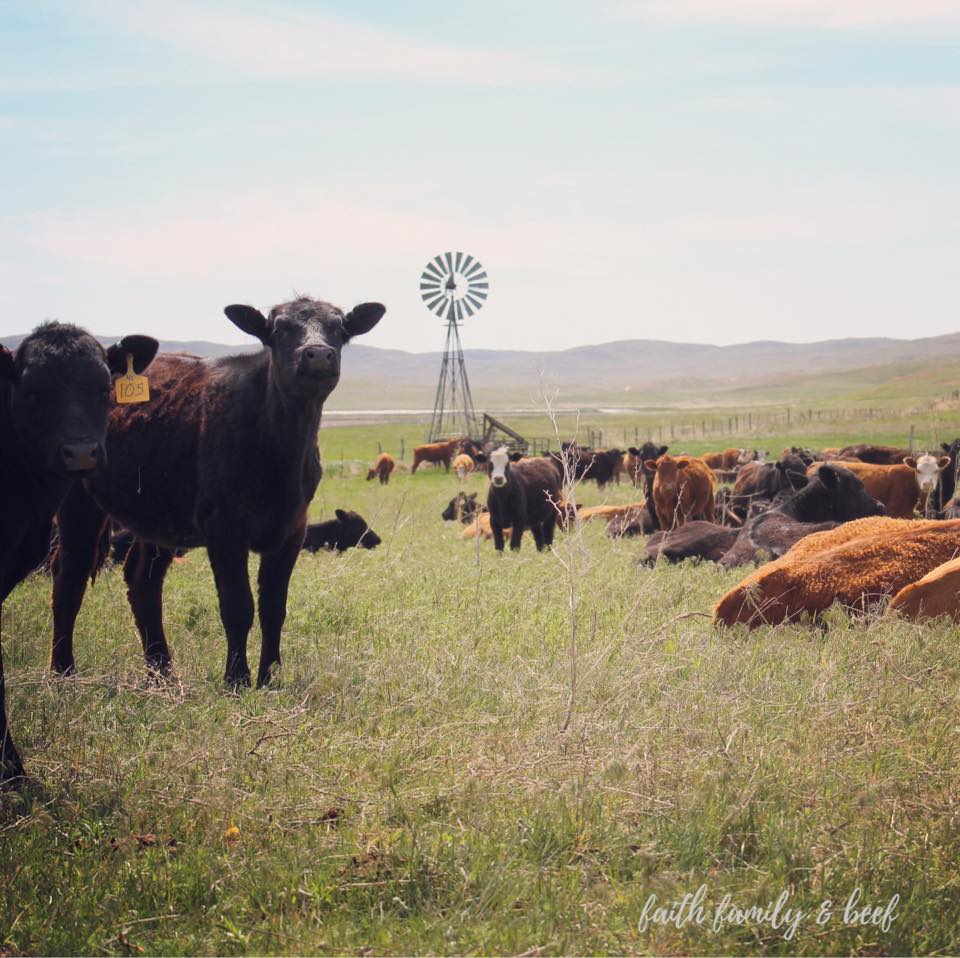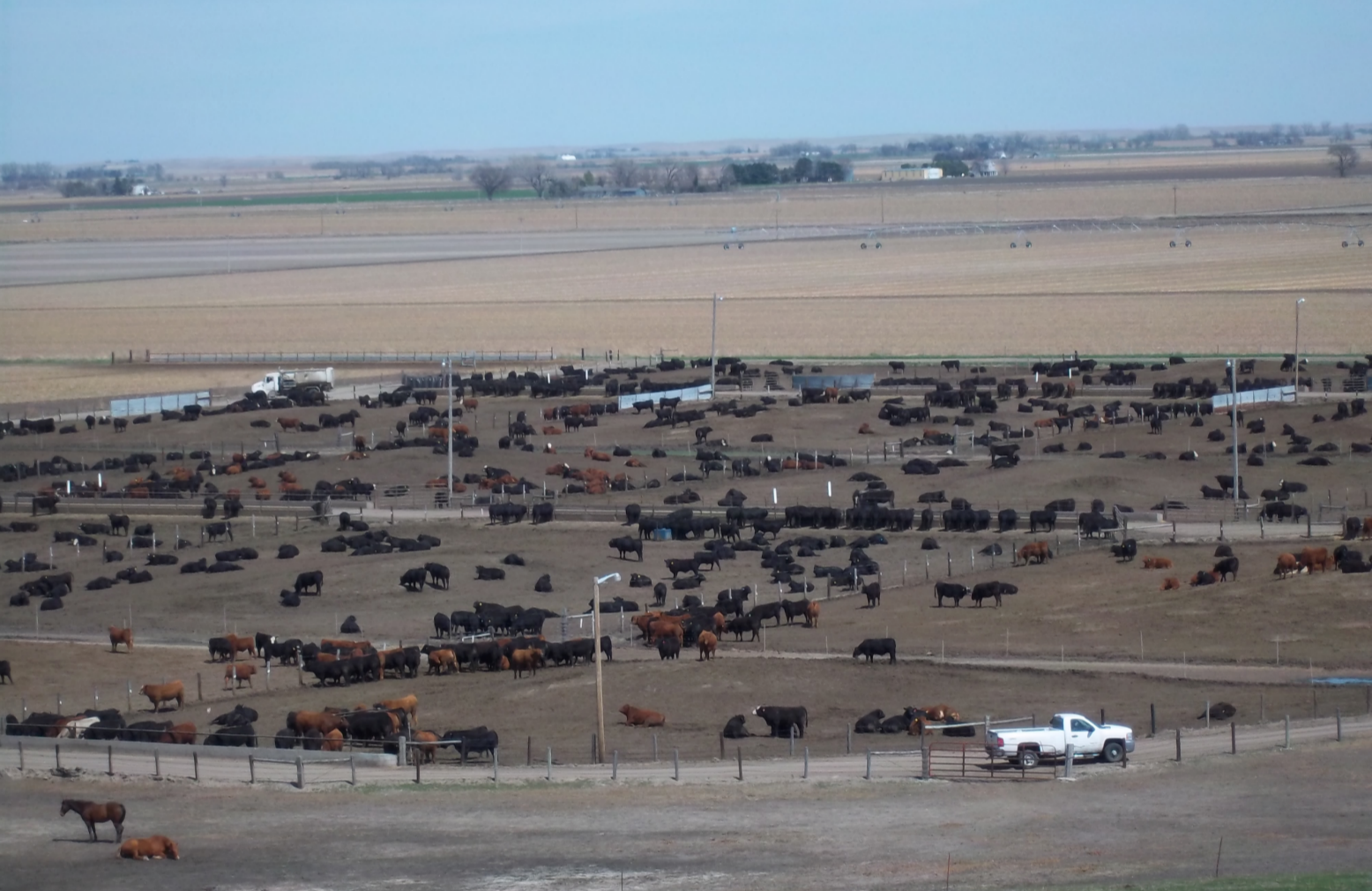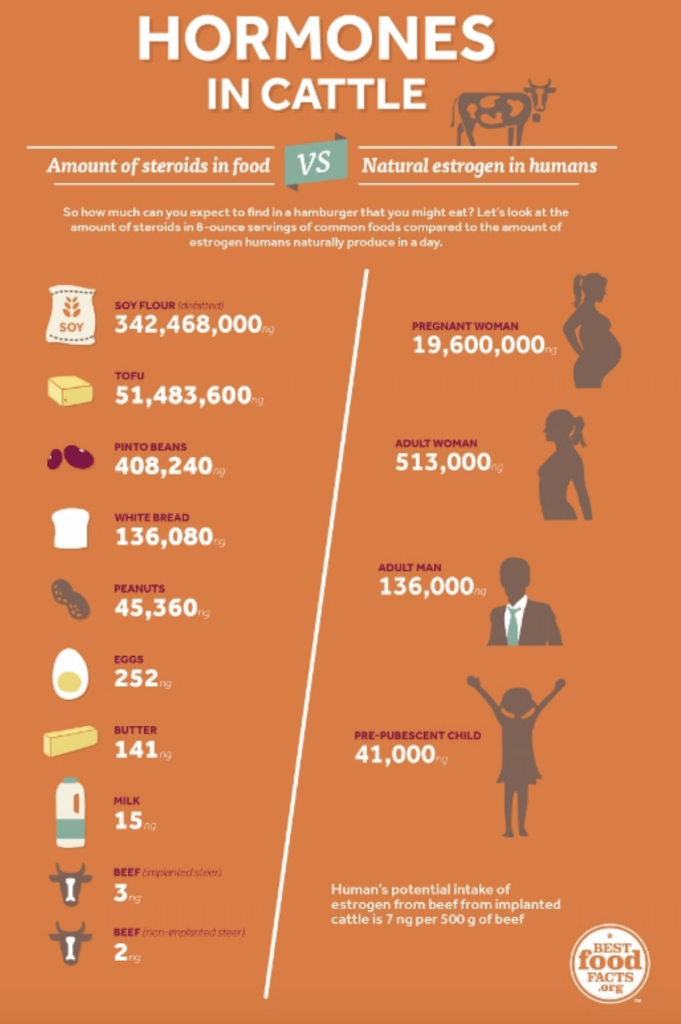Some of these links are affiliate links and some of them aren’t. Affiliate links help me keep Cowgirl Boots and Running Shoes up and running. (See what I did there?) For all the details on affiliate links, please visit the Terms & Conditions page.
I recently read a blog post about factory farming written by an influencer in the health and fitness industry.
Unfortunately, it was filled with myths.
I decided to reach out to the author with the following letter. I waited a long period and didn’t receive a response, but I got to thinking that if the author believes those misconceptions, maybe it would be a good idea to share the correct facts with others too.
Dear Influencer,
I want to thank you for your passion for sharing health and fitness and light and positivity with the world. You are a strong, empowering woman and since I myself also aspire to convince other women of their own strength and power, I greatly admire those qualities in you. The world definitely needs more women like you.
I am writing you today because of an article you wrote recently about “factory farming” and meat.
Thank you for using your platform to share the importance of lean red meat as an important part of a healthy diet!
However, your article sent mixed messages to your readers. Even I, a proud carnivore with background in agriculture, was a little confused by what you were trying to convey. In our role as influencers, we have a responsibility to research with an open mind, to challenge our beliefs, read both sides of every story, and be cautious about where we get our information and how we share that information with our team and our followers.
I grew up on a farm in central Nebraska. My parents still live there (it was my great-grandparent’s farm) and raise beef cattle, along with a few crops such as alfalfa, hay, and field corn. I moved to western Nebraska after college after I married my own farmer. He works as an agronomist, and we also farm and ranch with his parents on his grandparent’s farm. We raise beef cattle, along with wheat, soybeans, a little corn, and our kids! Fun fact—58% of farms in America have been in the family for three generations or more!
So, while I certainly believe everyone is entitled to their own opinions, I cannot sit back and watch as misconceptions grow about something so near and dear to my heart.
Let’s start with what we agree on: Beef is a nutrient-dense food! I have written extensively about its role in my healthy diet as an active mom, a pregnant mom, and while breastfeeding.
Finding information about farming from reputable sources.
I do not get mechanical advice from my dentist, or dental advice from my veterinarian, or plumbing advice from my OB/GYN. So it makes sense then to get information about how my food is grown or raised from a farmer with the knowledge and experience about that particular animal or food.
Without knowing where you get your perception of just what a “factory farm” is, I have to use the context of your article and the (less-than reputable) sources you cited. This leads me to believe that your picture of farming has been painted by animal-rights activists or “shockumentary” documentaries that make less-than-truthful portrayals to attract big dollars and further their agendas against those of us actually raising the food.
Michelle Miller addressed why the term “factory farm” is so offensive and provides lots of great resources to help dispel the myths spread by the media.
This is where the best-case scenario really would be to have you to accept my invitation to our farm or to any of my peers’ farms, (which range in “size” from three head of cattle to over 1,000) or any feedlot that I have ever been on.
You can also check out this short video that I think portrays well what you would see with your own eyes if you were to accept my invitation. This is actually from a feedlot here in my home state of Nebraska.
If a visit really is not plausible, (you’re thinking about it, aren’t you?) then read on through the next few paragraphs where I will challenge your beliefs about animal agriculture in America.
Misconceptions and truths about animal agriculture.
The resounding theme through your post is that you are most concerned with animal welfare and how that relates to the meat that you enjoy eating. I know you have a kind heart, and you are not alone in your concern. I care about how animals are treated from the farm and through their lifecycle as well.
Like you, I am a mom. I am a health and fitness fanatic—I too am a Beachbody coach, a PiYo Live instructor, and soon-to-be certified nutrition coach through Precision Nutrition. I totally get it–you want to know where your food comes from and that you are choosing healthy foods for you and your family.
I want those things too. And since I have been blessed with the unique opportunity to be surrounded by agriculture living the farm life every day, I want to use my perspective to help ease your worry by addressing some of the statements you wrote as well as provide you with some solid sources to look to when you have questions about farming and food.
Misconception: “MRSA jumped from animals to humans”
In college at the University of Nebraska Medical Center (I am also a Registered Diagnostic Medical Sonographer, aka ultrasound technologist) we learned about MRSA. But a simple Google search will show you that MRSA certainly did not “jump” from animals to humans.
Penicillin was first used to treat bacterial infections in the 1940’s. Penicillin-resistant strains of S. aureus were already common in hospitals by the 1950’s. Methicillin was introduced in 1961 to treat those penicillin-resistant strains, and within one year methicillin-resistant S. aureus (MRSA) had evolved. Multi-resistant strains are in fact how bacteria survive and evolve.
I follow Dr. Richard Raymond’s commentaries. He is the former Undersecretary for Food Safety with the USDA, who coincidentally also graduated from UNMC and I encourage you to check out his writing called “Lies, Damn Lies and Statistics” in Food Safety News.
Of importance in the piece, he reiterates basic science history:
“Antibiotics critical to human health includes the cephalosporin and the fluoroquinolone classes. These two classes of antibiotics made up 24 percent of all human antibiotics sold in 2009, but combined, they only represented 0.3 percent of all antibiotics sold for use in animal health.
The reason for this disparity is the FDA has already used its regulatory authority to limit these two categories of antibiotics to full therapeutic use to treat disease states in animals, limiting bacterial exposure to these antibiotics of critical importance to human health.
So when you read a report funded by the Pew Charitable Trust, or Consumers Union, stating that they found Salmonella sp. bacteria resistant to Cipro (a fluoroquinolone), where do you think that resistance came from? From the 11,000 kilograms used in animals, or from the 304,741 kilograms prescribed to treat humans?
Speaking of resistance in bacteria, penicillin was discovered in 1943; by 1950, just 7 short years later, 40 percent of all Staph isolates from US hospital intensive care units were resistant to penicillin. By 1960 that number was 80 percent. Methicillin was discovered in 1959. In 1960 the first case of methicillin-resistant Staphylococcus aureus (MRSA) was found in England. CAFOs (animal antibiotics) did not contribute to this rapidly developing resistance. Human use did.”
My friend Terryn does a great job covering the topic of antibiotics and meat here
and gives you a real look at how farmers are trying to stay on top of antibiotic resistance.
P. S. I uncovered the Scientific American post you referenced was originally an opinion piece. Frankly, it is kind of unusual SA published it. But, moving on….
Misconception: “farms try to pack the most meat in the smallest spaces….crammed close together, unable to move and able to spread disease….”
It comes down to understanding animal behavior and animal health. To understand animal welfare, you have to understand those two things. I’ll start with livestock.
Cattle are herd animals. Hence the term “herd” of cattle. You could put 100 cows in a pasture ten miles wide by ten miles long (that’s extreme, but I am exaggerating for a purpose), and you would find all 100 hanging out with each other in the same small space of that pasture. Cattle are prey animals, which means they naturally like to keep close quarters with each other for protection from predators. And during a rain or snow storm, they bunch up even more tightly for protection from the elements. It’s their natural instinct.

Cattle close together out in a pasture. Photo credit: Faith Family & Beef.

Aerial view of cattle at Anne’s feed yard.
How about poultry, like chickens or turkeys? Or dairy cattle? Or hogs? Why are they all often kept mostly inside large barns?
To start, biosecurity (keeping safe from disease) is the reason scientifically designed barns are operated. Keeping animals comfortable is a top priority and barns make temperature control much easier. They allow for environmental control and plenty of access to clean water, fresh feed, and clean bedding. In short these barns keep animals safe from environmental elements (such as lightening and blizzards), safe from predatory animals, and help keep bacteria from entering into the livestock from wildlife.
Misconception: “pumping them with hormones.”
Goodness. This is so inaccurate.
I’ll start with the easiest. Growth hormone use in chickens, turkeys, and pigs is not allowed- which means there are ZERO products manufactured for that use. So regardless of what a label (or lack of label) on your chicken, turkey, or pork says, no hormones have been fed, injected, sprayed or used by any other method.
But here’s a kicker—is that meat hormone-free? Nope. All food (except salt)—actually all living things—contains hormones!! Even cabbage! This is one of my favorite visuals!
Let’s briefly review hormone-content of some foods vs. the amounts present in humans.
How about hormone use in livestock?
First of all, let’s talk about why a one-time growth hormone implant (that is smaller–actually HALF the size–of a tic-tac and contains less hormones than birth control pills) is used in some beef cattle. If a farmer chooses to use growth hormones, this tiny implant is placed under the skin of the back of one ear (meaning it never enters the meat supply). Over time, the hormone is released and is completely depleted after 90-150 days, during which they are eating and growing in a pasture or in a feedlot.
Do the hormones “build up” in their system?
My favorite analogy to explain this comes from Michele Payn, author of one of my favorite books: think of birth control pills that women take. If you stop taking them, the hormones are no longer “in your system.” They don’t “build up” and prevent pregnancy for months in the future. Here is another great way to put them in context.
Why do beef cattle get a growth hormone at all?
The implant helps reduce the carbon footprint of meat. It allows the animal to convert their food to muscle more efficiently and grow 15% faster, which also translates into the highest quality meat. More feed efficiency and faster growth means less environmental impact with no impact on animal or human health.
I think it’s also worth mentioning the USDA, all the major countries’ scientific bodies (even the European Union!!), the Academy of Nutrition and Dietetics, and the Journal of Clinical Nutrition, have all stated that there is no difference in safety or nutrition of beef raised with hormones vs without. And, as depicted above—an 8oz serving of beef from a steer that had been implanted has 7 ng of hormones. An 8oz serving of beef from a steer that never had an implant has 5 ng. A nanogram is one-BILLIONTH of a gram. So is 2 ng significant? Not in my book!
Claim: grass-fed beef contains twice as many omega-3 fatty acids.
It’s important to understand that almost ALL cattle are raised on grass. Some are finished on grain for the last few months of their lives, and some are grass-finished.
The difference in nutrition this makes is primarily seen in the fatty acid profile, specifically the omega-3 fatty acids. In grain-finished beef, omega-3’s make up 1% of the profile, and 4% in grass-finished beef. So technically your statement is correct (from your NPR article) about grass-fed having twice as much. BUT, no one should be eating beef for the omega-3’s. I mean, I’m personally going to choose things like fatty fish (salmon) as a primary source of omega-3’s in my diet. (Note the omega-3 content of all beef is not even enough to be recognized by the American Heart Association as being a good source or having an impact on human health).
To be specific, a serving of grass-finished beef contains 55 milligrams of omega-3’s, while a same-size serving of grain-finished beef contains 20 milligrams. But compare this to a serving of salmon which contains 1270 milligrams!! So I think we can lay that entire argument to rest—omega-3 content is not a reason to choose grass-finished over grain-finished. This is backed up by a recent study done in your home state and pretty comparative to the study you cited, but where we disagree is that I feel like a 35 MILLIgram difference is insignificant!
Another reason someone may choose to raise and/or eat conventional grain-finished beef over grass-finished comes down to sustainability. Farmers are stewards of the land in every sense. Taking care of our resources is priority number one, even over taking care of our animals. Because frankly, if we don’t take care of our resources we can’t properly take care of our animals. Major large studies have shown grain-finished beef is more sustainable than grass-finished. Here are two published, peer-reviewed studies that do a great job explaining why. And the second one is in the Animals journal.
And since we’re on the topic, let’s discuss WHY cattle eat grain. I have previously written the answer to this question (because it’s a common question!).
In other words, corn is not bad for cattle. It is a nutrient-dense food for them and they love it. However, even when cattle are moved from pasture to the feedlot for the last few months of their lives, they are still fed plenty of hay and other forages along with the corn and grain. It is all carefully planned and managed by a veterinarian and a beef nutritionist.
If you would like to read a summary of what I have outlined here, you can check out the research from another respected fitness professional Maria over at Fitness Reloaded.
Let’s talk about “waste”
I would be curious to know what “study” you were referring to that found “waste” in what is fed to cattle. You say it like it’s a bad thing, but I hope my blog post on why cows eat corn clears up misconceptions on that topic too because it’s actually an awesome that cattle are “upcyclers.”
The fact cattle are biologically made to take leftovers and recycle them is a GOOD thing! If you don’t read my blog post, we use the term “upcycle” because instead of just recycling material, they upgrade food waste, that which is inedible for humans, turning it into high-quality protein and essential micronutrients.
Cattle can consume feeds–like the leftovers from corn, brewers grains, citrus pulps and other products that are considered leftovers and would just be thrown away or end up in landfills–and utilize them as nutrient-rich foods. (This also contributes to improved sustainability! #win!)
Conclusion
The answer to both of your main questions is actually no.
The size of the farm, or the number of animals, how/where they are housed and what they eat does not determine their health or nutrition of the finished beef product. Everything a farmer does is for a specific reason–resource stewardship and/or animal health/behavior because again—healthy animals are the backbone of a farm. Without good animal health, you have no business which means no more farm. It’s the hardest, most thankless job in the world, and no one would do it if we didn’t truly love our responsibility of taking the best care possible of our animals.
I hope I have helped clear up some misconceptions and answered your questions about how animals are raised and the meat we eat. At the very least, I hope I have convinced you to dig a little deeper than what you read or see in the media about farming in America.
Like any other profession, it’s the people who make the difference. Like my friend Jennie Hodgen says, “You can have some of the most caring, knowledgeable farmers who are the biggest…..the vast majority of us—even those of us who have large number of animals or more than 100 acres of land—are always trying to do better. To provide food for you, your families, and our families while preserving our land so our kids and their kids if they desire can have the honor of raising your food.”
Thank you for your time.
Keep changing the world, one woman at a time!
XOXO,
Michaela Gasseling, mom, Beachbody coach, PiYo Live instructor, farmer’s wife, writer, health and fitness enthusiast!
P.S. Please come for a visit. I would so love that! If that’s simply not in the cards, at least spend some time with the resources I have provided and reach out to me with your questions. I’m here, and I’m happy to help.









Leave a Reply